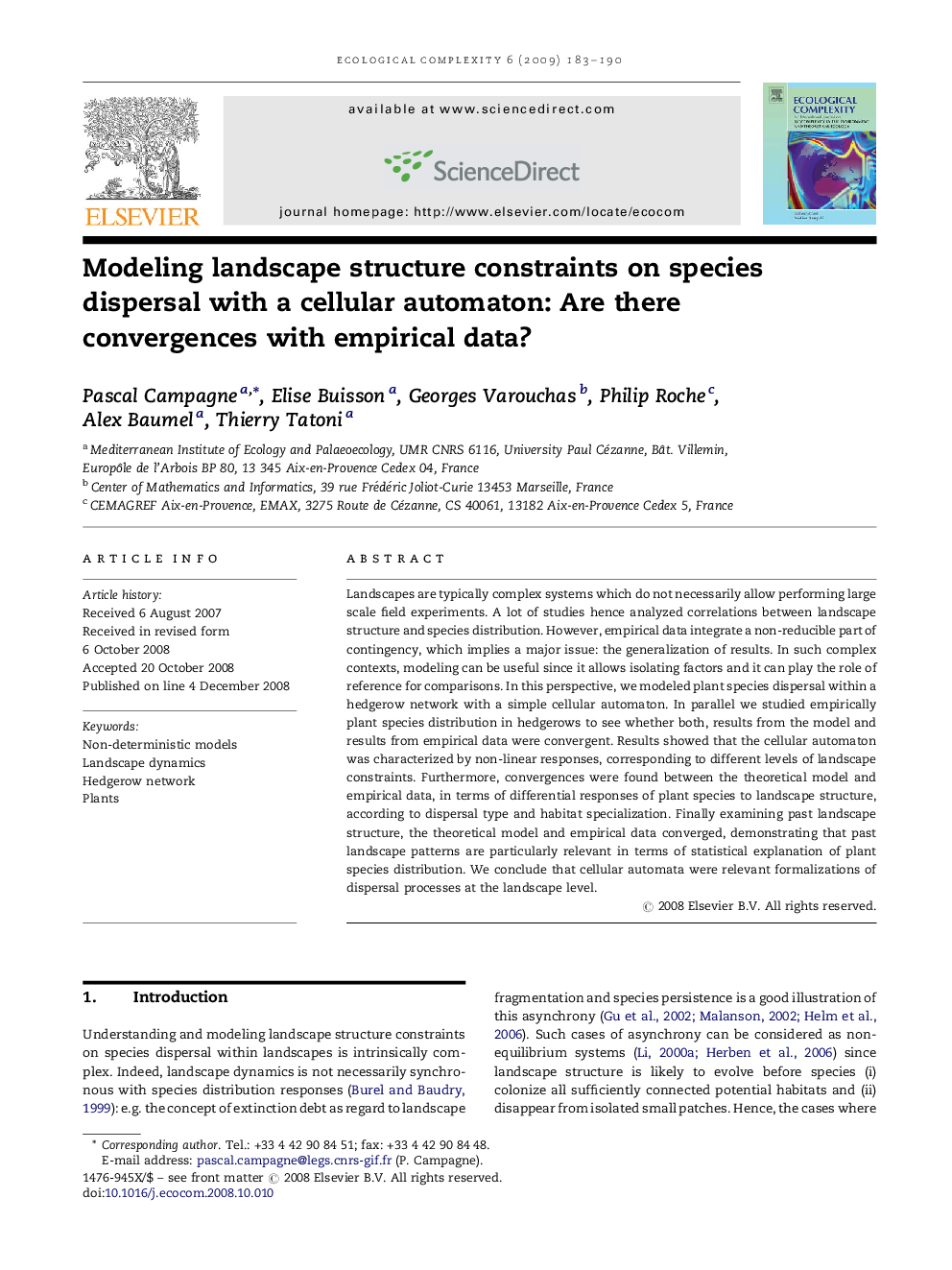| Article ID | Journal | Published Year | Pages | File Type |
|---|---|---|---|---|
| 4372726 | Ecological Complexity | 2009 | 8 Pages |
Landscapes are typically complex systems which do not necessarily allow performing large scale field experiments. A lot of studies hence analyzed correlations between landscape structure and species distribution. However, empirical data integrate a non-reducible part of contingency, which implies a major issue: the generalization of results. In such complex contexts, modeling can be useful since it allows isolating factors and it can play the role of reference for comparisons. In this perspective, we modeled plant species dispersal within a hedgerow network with a simple cellular automaton. In parallel we studied empirically plant species distribution in hedgerows to see whether both, results from the model and results from empirical data were convergent. Results showed that the cellular automaton was characterized by non-linear responses, corresponding to different levels of landscape constraints. Furthermore, convergences were found between the theoretical model and empirical data, in terms of differential responses of plant species to landscape structure, according to dispersal type and habitat specialization. Finally examining past landscape structure, the theoretical model and empirical data converged, demonstrating that past landscape patterns are particularly relevant in terms of statistical explanation of plant species distribution. We conclude that cellular automata were relevant formalizations of dispersal processes at the landscape level.
